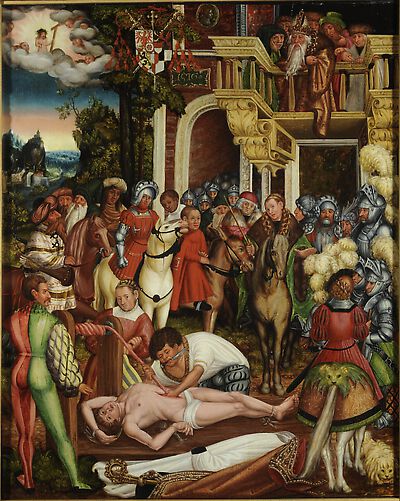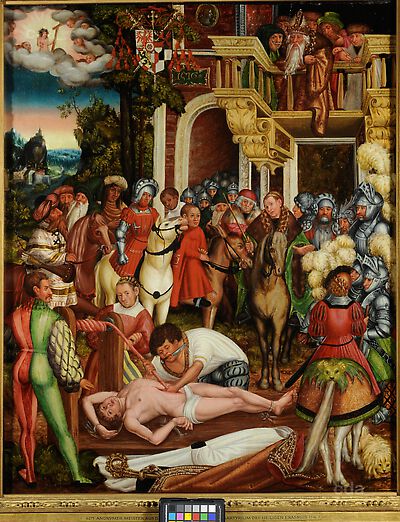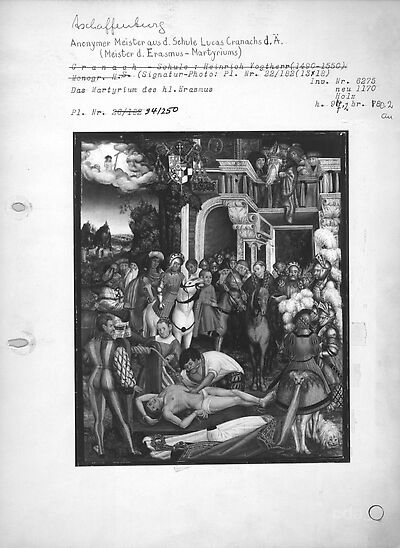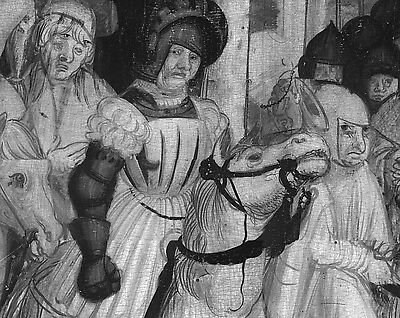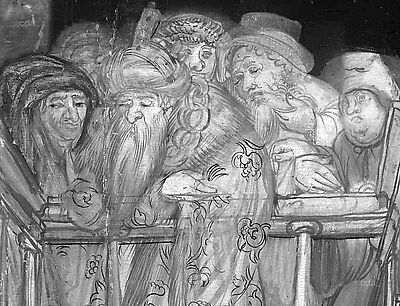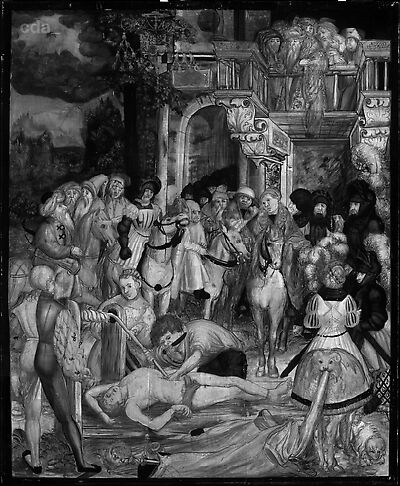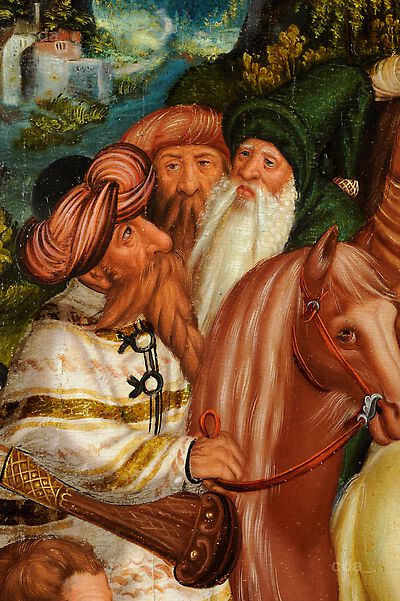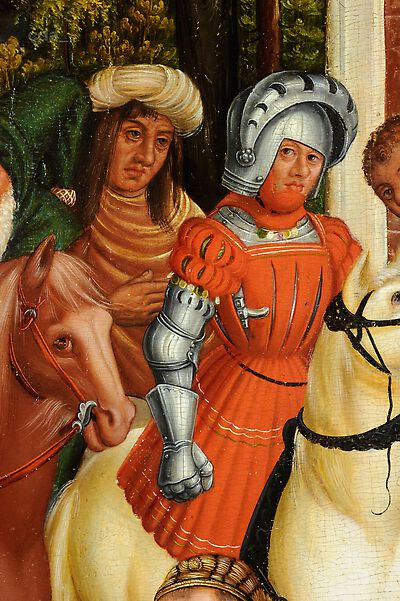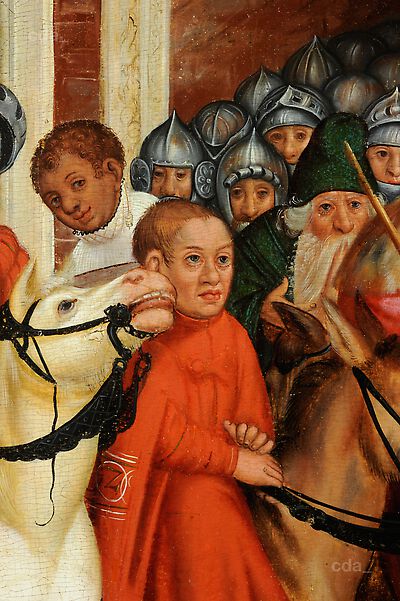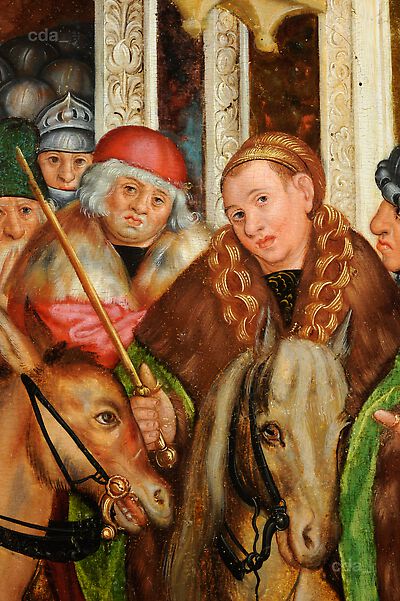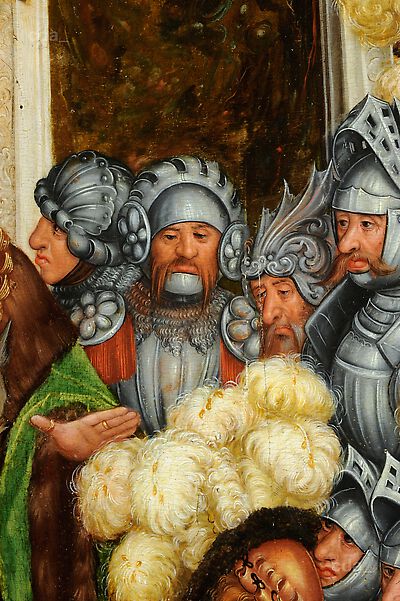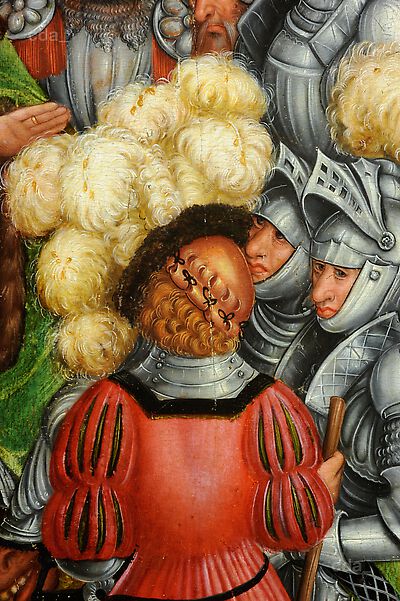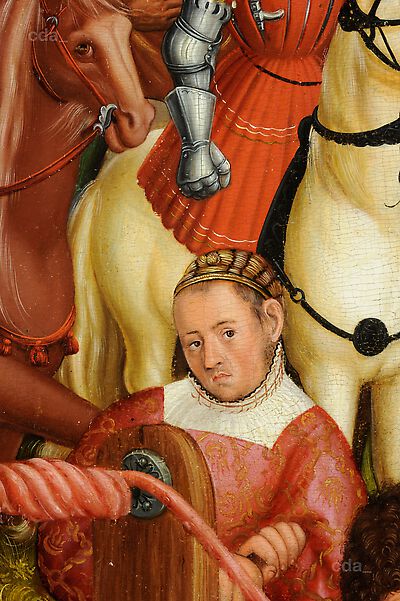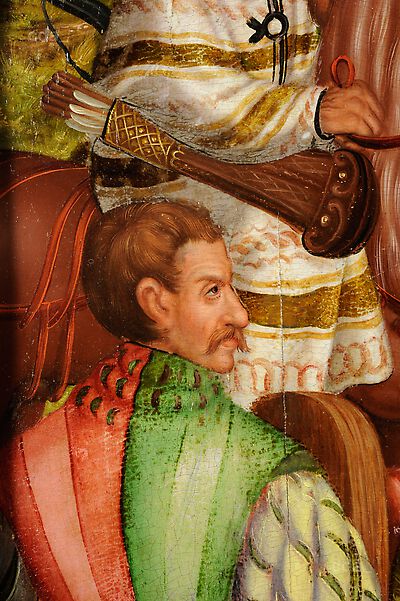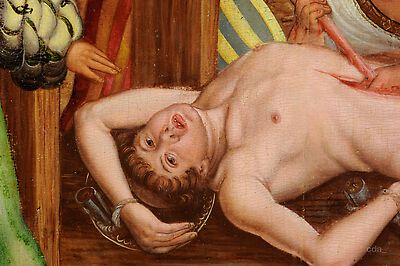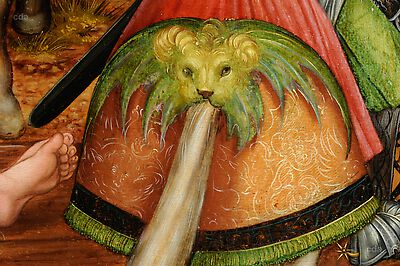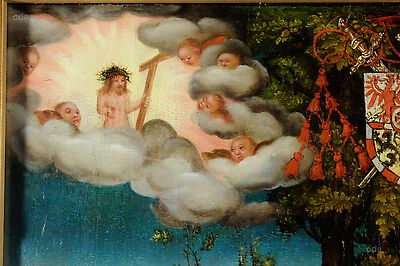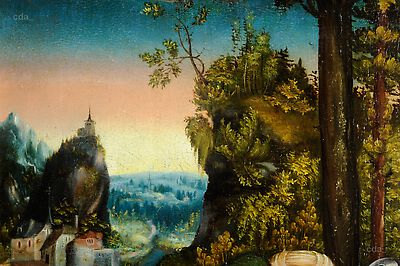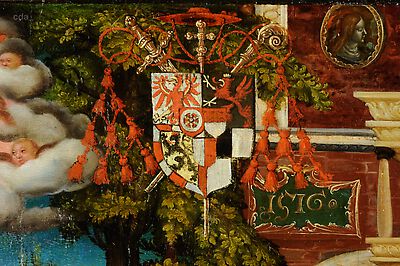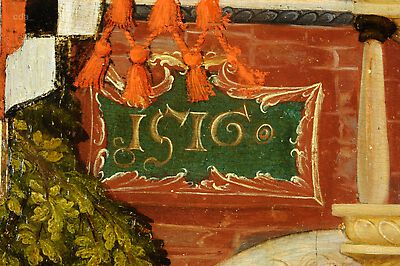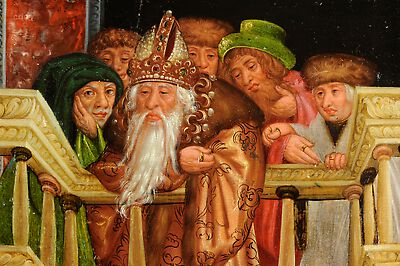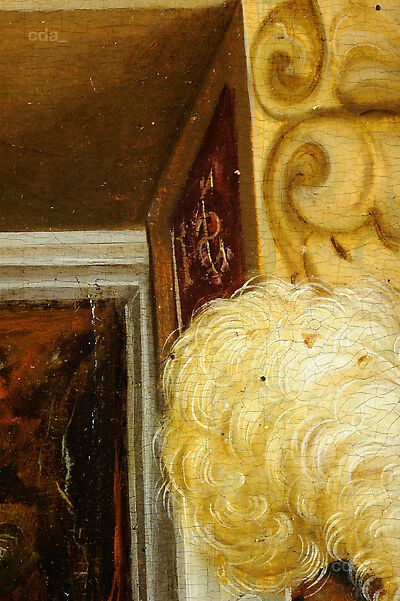| Exhib. Cat. Munich 2011 |
142 |
|
|
| Author | Martin Schawe |
|---|
| Editor | Bayerische Staatsgemäldesammlungen |
|---|
| Title | Cranach in Bayern |
|---|
| Place of Publication | Munich |
|---|
| Year of Publication | 2011 |
|---|
|
| Exhib. Cat. Aschaffenburg 2007 |
269-270 |
No. 13 |
Fig. p. 272 |
| Editor | Gerhard Ermischer, Andreas Tacke |
|---|
| Title | Cranach im Exil. Aschaffenburg um 1540. Zuflucht - Schatzkammer - Residenz. Ausstellungskatalog Schloss Johannisburg und Kunsthalle Jesuitenkirche |
|---|
| Place of Publication | Regensburg |
|---|
| Year of Publication | 2007 |
|---|
|
| Frankhäuser 2007 |
205 |
|
Fig.9 |
| Author | Gernot Frankhäuser |
|---|
| Title | Wie Dalberg Grünewald suchte und Cranach fand. Zur Beschäftigung mit altdeutscher Malerei in Mainz und Aschaffenburg um 1800. |
|---|
| Publication | in Gerhard Ermischer, Andreas Tacke, eds., Cranach im Exil. Aschaffenburg um 1540. Zuflucht, Schatzkammer, Residenz, Exhib. Cat. Aschaffenburg |
|---|
| Place of Publication | Regensburg |
|---|
| Year of Publication | 2007 |
|---|
| Pages | 197-213 |
|---|
|
| Schawe 2007 A |
215, 221 |
|
Fig. 1 |
| Author | Martin Schawe |
|---|
| Title | Cranach in Aschaffenburg. 1814 bis heute |
|---|
| Publication | in Gerhard Ermischer, Andreas Tacke, ed., Cranach im Exil- Aschafffenburg um 1540. Zuflucht, Schatzkammer, Residenz |
|---|
| Place of Publication | Regensburg |
|---|
| Year of Publication | 2007 |
|---|
| Pages | 215-225 |
|---|
|
| Schawe 2007 B |
236, 239, 241 |
|
Figs. 12, 13 |
| Author | Martin Schawe |
|---|
| Title | Verborgene Meisterwerke. Die Unterzeichnungen auf den Cranach-Tafeln |
|---|
| Publication | in Gerhard Ermischer, Andreas Tacke, eds., Cranach im Exil - Aschafffenburg um 1540. Zuflucht, Schatzkammer, Residenz, Exhib. Cat. Aschaffenburg |
|---|
| Place of Publication | Regensburg |
|---|
| Year of Publication | 2007 |
|---|
| Pages | 235-241 |
|---|
|
| Exhib. Cat. Halle 2006 |
157, 158 |
072 (see also no. 73) |
Pl. p. 160 |
| Editor | Thomas Schauerte |
|---|
| Title | Der Kardinal Albrecht von Brandenburg. Renaissancefürst und Mäzen. Bd. 1: Katalog |
|---|
| Place of Publication | Regensburg |
|---|
| Year of Publication | 2006 |
|---|
|
| Exhib. Cat. Chemnitz 2005 |
287, 288 Fn.12 |
under No. 14 |
Fig. 128 |
| Editor | Harald Marx, Karin Kolb, Ingrid Mössinger |
|---|
| Title | Cranach Anlässlich der Ausstellung Cranach vom 13. November 2005 bis 12. März 2006 in den Kunstsammlungen Chemnitz. Eine Ausstellung in Kooperation mit der Gemäldegalerie Alte Meister der Staatlichen Kunstsammlungen Dresden |
|---|
| Place of Publication | Cologne |
|---|
| Year of Publication | 2005 |
|---|
|
| Krischel 2003 |
18-22 |
|
|
| Author | Roland Krischel |
|---|
| Title | Cranach in Köln. Zum 450. Todestag des Schnellmalers von Wittenberg |
|---|
| Journal | Kölner Museums-Bulletin |
|---|
| Issue | 2 |
|---|
| Year of Publication | 2003 |
|---|
| Pages | 4-22 |
|---|
|
| Exhib. Cat. Aschaffenburg 2002 |
|
No. 159 |
|
| Editor | Rainhard Riepertinger, Evamaria Brockhoff, Katharina Heinemann, Jutta Schumann |
|---|
| Title | Das Rätsel Grünewald [Schloss Johannisburg, Aschaffenburg] |
|---|
| Place of Publication | Augsburg |
|---|
| Year of Publication | 2002 |
|---|
|
| Emmendörffer 1998 |
207, 208 |
|
Fig. 22.4 |
| Author | Christoph Emmendörffer |
|---|
| Title | Die selbständigen Cranachschüler |
|---|
| Publication | in Ingo Sandner, Wartburg-Stiftung Eisenach and Fachhochschule Köln, eds., Unsichtbare Meisterzeichnungen auf dem Malgrund. Cranach und seine Zeitgenossen, Exhib. Cat. Eisenach |
|---|
| Place of Publication | Regensburg |
|---|
| Year of Publication | 1998 |
|---|
| Pages | 203-228 |
|---|
|
| Müller 1997 |
|
No. 30 |
|
| Author | Frank Müller |
|---|
| Title | Heinrich Vogtherr l'Ancien. Un artiste entre Renaissance und Réforme |
|---|
| Place of Publication | Wiesbaden |
|---|
| Year of Publication | 1997 |
|---|
|
| Tacke 1992 |
33, 41-169 |
|
|
| Author | Andreas Tacke |
|---|
| Title | Der katholische Cranach. Zu zwei Großaufträgen von Lucas Cranach d. Ä., Simon Franck und der Cranach-Werkstatt (1520 - 1540) |
|---|
| Series | Berliner Schriften zur Kunst |
|---|
| Volume | 2 |
|---|
| Place of Publication | Mainz |
|---|
| Year of Publication | 1992 |
|---|
|
| Friedländer, Rosenberg 1979 |
|
No. Sup 5 |
|
| Author | Max J. Friedländer, Jakob Rosenberg |
|---|
| Editor | G. Schwartz |
|---|
| Title | Die Gemälde von Lucas Cranach |
|---|
| Place of Publication | Basel, Boston, Stuttgart |
|---|
| Year of Publication | 1979 |
|---|
|
| Cat. Aschaffenburg 1975 |
60-61 |
|
|
| Author | n. a. |
|---|
| Title | Bayerische Staatsgemäldesammlungen, Galerie Aschaffenburg. Katalog |
|---|
| Place of Publication | Munich |
|---|
| Year of Publication | 1975 |
|---|
|
| Steinmann 1968 A |
72f., 86 |
|
|
| Author | Ulrich Steinmann |
|---|
| Title | Der Bilderschmuck der Stiftskirche zu Halle. Cranachs Passionszyklus und Grünewalds Erasmus-Mauritius-Tafel |
|---|
| Volume | 11 |
|---|
| Journal | Forschungen und Berichte. Staatliche Museen zu Berlin |
|---|
| Place of Publication | Berlin |
|---|
| Year of Publication | 1968 |
|---|
| Pages | 69 - 104 |
|---|
|
